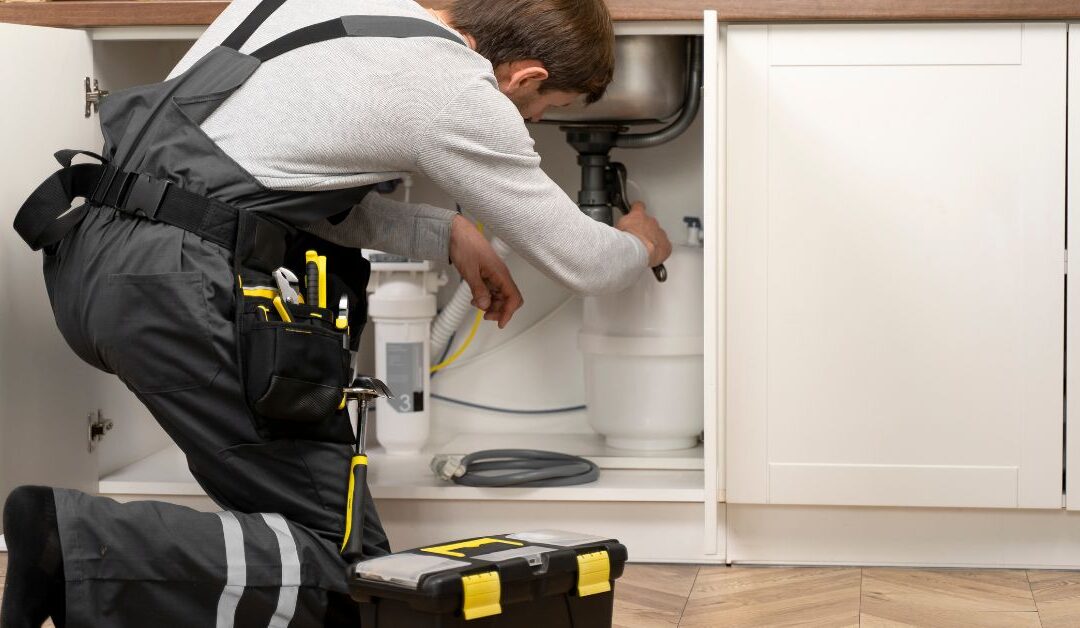In today’s world, where water is as precious as any resource, ensuring its purity and safety in our homes and businesses is paramount. Among the critical services ensuring this safety are backflow prevention and regular plumbing inspections. This comprehensive guide will delve into the essence of these hvac services, exploring why they are indispensable for maintaining a healthy, efficient, and safe water supply system.
The Essence of Backflow Prevention
To understand backflow prevention, it’s essential to first grasp what backflow is. Backflow occurs when the normal flow of water in pipes is reversed, either due to a sudden change in pressure (backpressure) or a vacuum effect (back siphonage). This reversal can cause contaminants to enter the clean water supply, posing serious health risks.
- Understanding the Risks of Backflow
Backflow can introduce contaminants like pesticides, fecal matter, chemicals, or industrial fluids into potable water systems. These pollutants can lead to severe health issues, making backflow prevention not just a technical concern but a public health imperative.
- Types of Backflow Prevention Devices
Several devices are used for backflow prevention, including reduced pressure zone (RPZ) valves, double-check valves, and vacuum breakers. Each type is suited to different scenarios, depending on the hazard level and the specific requirements of the water system.
Regular Plumbing Inspections: Your First Line of Defense
Regular plumbing inspections play a crucial role in identifying potential issues before they escalate into major problems. These inspections can spot early signs of pipe corrosion, leaks, or failures in the backflow prevention system.
- The Importance of Professional Inspections
Professional plumbers have the expertise and tools necessary to conduct thorough inspections. They can identify and rectify issues that might not be apparent to the untrained eye, ensuring your plumbing system operates optimally.
- Frequency of Plumbing Inspections
The frequency of inspections depends on several factors, including the age of the building, usage patterns, and local regulations. Generally, annual inspections are recommended for most residential properties, while commercial or industrial properties might require more frequent checks.
The Role of Backflow Prevention in Public Health
The connection between backflow prevention and public health cannot be overstated. Backflow incidents can lead to waterborne diseases and have been responsible for significant public health crises.
- Historical Backflow Incidents and Lessons Learned
Several historical incidents highlight the dangers of inadequate backflow prevention. By studying these cases, we learn the importance of stringent regulations and regular maintenance in safeguarding water quality.
- Regulatory Framework for Backflow Prevention
Most regions have specific regulations and codes that govern backflow prevention. These regulations ensure that all plumbing systems have appropriate backflow prevention measures in place, tailored to the level of risk associated with the property.
Innovations in Backflow Prevention and Plumbing Inspection
Technological advancements have significantly improved the efficacy of backflow prevention and plumbing inspections.
- Technological Advancements in Backflow Prevention
Innovative backflow preventers with smart monitoring capabilities are becoming more common. These devices can alert property owners or maintenance personnel of malfunctions in real time, enhancing safety and efficiency.
- Modern Plumbing Inspection Techniques
Modern plumbing inspections utilize advanced tools like video pipe inspection and thermal imaging. These technologies allow for non-invasive and accurate detection of hidden leaks or weaknesses in the plumbing system.
DIY Versus Professional Services: What You Need to Know
While some minor plumbing tasks can be handled by a DIY enthusiast, backflow prevention and most plumbing inspections are best left to professionals.
When to Call a Professional
It’s essential to recognize when a situation is beyond DIY capabilities. Professional intervention is required for installing, testing, or repairing backflow prevention devices and for conducting comprehensive plumbing inspections.
Environmental and Economic Impact of Effective Backflow Prevention
Effective backflow prevention and plumbing inspections have significant environmental and economic impacts. By preventing contamination, they conserve water resources and prevent costly incidents that could result in substantial water loss and damage.
Conclusion
Understanding the critical role of backflow prevention services and regular plumbing inspections is key to maintaining a safe and efficient water supply system. These measures are not just technical requirements but are essential components in safeguarding public health and preserving our precious water resources. By staying informed and proactive, we can ensure that our water systems remain clean, safe, and efficient for generations to come. Remember, in the world of plumbing and water safety, prevention is always better than cure.





